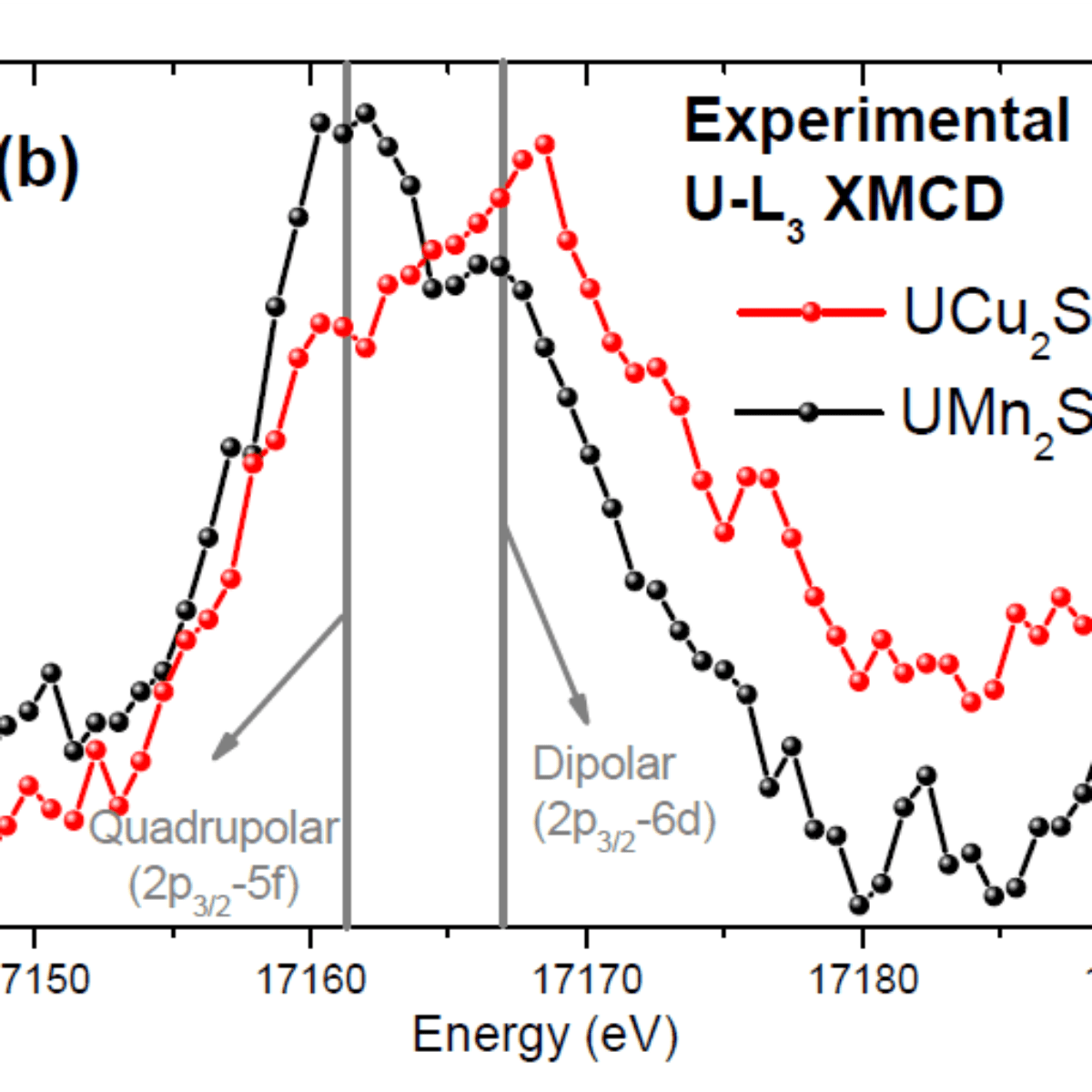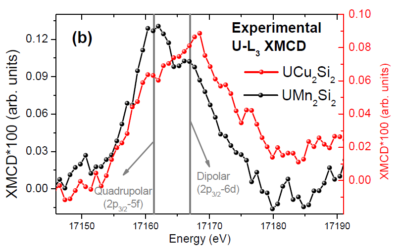
A new research demonstrates a direct and selective way to investigate 5f electrons in actinide compounds as well as their interaction with other valence electrons
Actinides are a series of chemical elements that form the basis of nuclear fission technology, finding applications in strategic areas such as power generation, space exploration, diagnostics and medical treatments, and also in some special glass. Thorium (Th) and Uranium (U) are the most abundant actinides in the Earth’s crust.
A deeper understanding of the properties of uranium and other actinides is necessary not only for their more efficient use in existing applications but also for proposing new applications. Several open questions remain, progress in this area usually limited in part by the difficulty in handling these materials safely.
The distribution of electrons in the outer orbital of the atoms that make up a given material is what defines whether they are electrical insulators, conductors or semiconductors, as well as whether they are hard or malleable. Other structural, electronic and magnetic properties are also defined by these valence electrons which may undergo electronic hybridization with other orbitals. Such mixture of orbitals modifies material properties influencing oxidation states, the way bonding between atoms takes place, and hence the geometrical arrangement formed in crystals and molecules with actinide elements.
In the actinide elements, the 5f and 6d orbitals have the tendency to hybridize especially in atoms of this series that have a small number of electrons in the 5f orbitals, as is the case of Uranium. In compounds with this element, it is recognized that the degree of localization of the electrons in the f-orbital, affected by electronic hybridization, is a determining factor in their properties. However, the experimental methods for the direct and selective investigation of the 5f state and their hybridization with other valence electrons do not exist.
In an article published in the journal Nature Communications [1], a research collaboration between the Brazilian Synchrotron Light Laboratory (LNLS/CNPEM), University of Campinas (IFGW/UNICAMP), Advanced Photon Source (APS/ANL), and Institut Néel (CNRS-Grenoble) demonstrated that the use of X-ray magnetic circular dichroism (or XMCD) in the L-absorption edge of uranium using relatively high energy (17 keV) X-rays can be used to investigate the 5f and 6d orbitals, and their hybridization directly and selectively.

X-ray Magnetic Circular Dichroism (XMCD) measurements for $\rm UCu_2Si_2$ and $\rm UMn_2Si_2$ performed at temperatures of 10 K and 300 K, respectively.
04Ricardo Reis, the first author of this work, comments that “the ability to obtain this information is crucial for understanding a plethora of open questions in actinide compounds, which may promote an increase in the potential of applications of these materials. “
This seems to be the first report of the high energy XMCD technique being used to probe the electronic properties of compounds based on actinide elements. For this, it was necessary to overcome challenges of measuring small XMCD signals in addition to difficulties of manipulating these types of compounds.
Narcizo Souza Neto, a lead scientist at LNLS who proposed and leaded this research, commented that “the development of this new technique was carried out with the aim of opening new possibilities for the study of actinide materials by the scientific community.”
Narcizo also adds that “with the construction of the new Brazilian synchrotron light source (Sirius) and the beamline dedicated to study materials in extreme conditions (EMA), this type of study will be greatly facilitated by the capacity to probe ultra-low amplitude signals at ambient and under applied pressures. In addition, a support laboratory is planned near the beamline to efficiently handle these types of compounds. This infrastructure will be one-of-a-kind in the world capable of developing this type of research, opening a great window of opportunity for the community.”
Source: [1] Unraveling 5f-6dhybridization in uraniumcompounds via spin-resolved L-edge spectroscopy. R. D. dos Reis, L. S. I. Veiga, C. A. Escanhoela Jr., J. C. Lang, Y. Joly, F. G. Gandra, D. Haskel & N. M. Souza-Neto, Nature Communications 8:1203 (2017). DOI: 10.1038/s41467-017-01524-1
Research proposes new mechanism for Suzuki-type C-C homocoupling reaction catalyzed by palladium nanocubes
Research investigates the impact of oxidation on electronic and vibrational properties